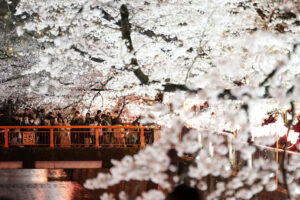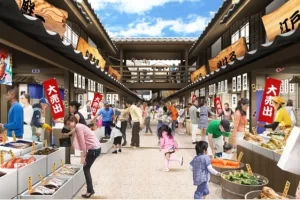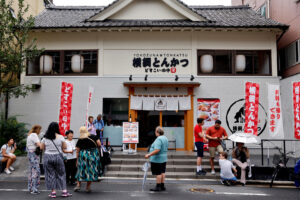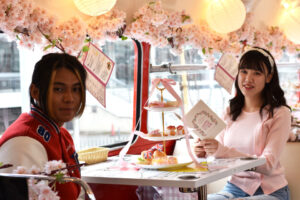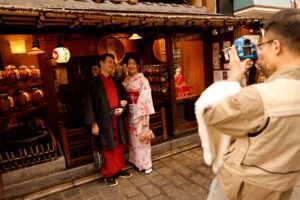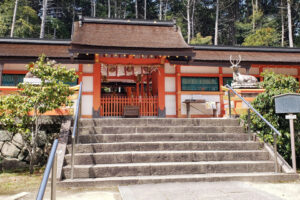Tokyo, 14 March, /AJMEDIA/
TOKYO – With Japan preparing to welcome foreign visitors for the cherry blossom season for the first time in three years after loosening COVID-19 border controls, excitement is in the air for the travel industry.
Operators of popular tourist spots are rushing to ride the cherry blossom wave, adorning everything from restaurants, vehicles and digital art with shades of pink and petal designs.
E-commerce travel platform KKday said activity bookings from overseas for the March 18 to April 30 period have already hit around 50 percent of 2019 figures — the last cherry blossom season before the pandemic — with the firm holding high hopes for a complete recovery by the time blossoms hit their peak.
“We expect the figure to exceed 2019 levels,” said Kosei Obuchi, president of KKday Japan Co, the platform’s local operator. “While people tend to book hotels one or two months in advance, when it comes to activities, the vast majority do it only one month or two weeks beforehand.”
Obuchi has reason to be optimistic. KKday Japan has already toppled pre-pandemic figures this year, with bookings for the Lunar New Year holidays — Jan. 20 to 29 — around 250 percent more than 2019 levels.
The firm’s recovery for January at 180 percent is also higher than the overall market, with the number of foreign visitors to Japan that month still at only 55.7 percent of pre-pandemic January 2019, according to the Japan National Tourism Organization.
Obuchi said that the company’s efforts to attract more customers by taking advantage of the digital shift during the pandemic paid off.
“Customers who had gone to physical stores to (book) are now used to doing it online,” Obuchi said. “KKday was able to successfully tap into those needs.”
With 12 offices across Asia and the Pacific, including its headquarters in Taiwan, KKday offers activities and tickets at locations around the globe, but Japan is currently “the number one destination,” according to Obuchi.
The JNTO data showed that South Koreans constituted the largest group of visitors to Japan in January with 565,200 travelers, followed by Taiwan at 259,300 and Hong Kong at 151,900.
Taiwanese student Li Hsin, an avid traveler to Japan who visited two to three times a year before the pandemic, was among the participants of an afternoon tea bus tour on March 5 booked through KKday.
The tour, which runs on selected days until the end of the month, takes passengers on a 90-minute “London bus” drive-by to famous cherry blossom spots in Tokyo as they enjoy a selection of sweet and savory delights on board.
“I had been to Japan many times before, but never during cherry blossom season,” the 28-year-old said. “So I wanted to come to Japan and experience a cherry blossom pilgrimage.”
While border restrictions enforced due to the pandemic prevented Li from visiting Japan for around three years, she was finally able to return last October as a student. And she noticed some differences.
“Before (the pandemic), store attendants were very happy when I went to buy something and could use simple English or simple Japanese to communicate. But when I just arrived (in October), probably because the borders had been closed for a while, they would tend to only use Japanese to communicate,” she said.
But Li added that the stores have since been quick to adapt, and now “things have returned to how they were before.”
Restaurants have also been eager to embrace the return of foreign visitors, with Bills, an Australian restaurant chain, running a “Hanami at Bills” event from March through April 9 at all eight of its branches in Japan.
During the period, each store’s interior will be decorated with live cherry blossom plants for diners to enjoy, and two seasonally-themed drinks will be on offer to complement its multicultural menu.
With foreigners making up a large bulk of its customer base, Bills, which is celebrating its 15th anniversary since coming to Japan this month, was hit hard by the events of the past few years.
But foreign diners have gradually begun to return since late last year following the easing of Japan’s border measures in October, with the branch in Fukuoka, southwestern Japan, seeing a lot of Taiwanese customers, according to a media coordinator for Bills.
Meanwhile, the branch in Tokyo’s upscale Ginza district has seen “a lot of Middle Eastern customers, who are likely tourists staying in the area wanting a place to eat in the morning, when not a lot of places are open,” the coordinator said.
Teamlab Planets Tokyo, a temporary digital art museum in Toyosu, has also seen a surge in foreign visitors since Japan eased border restrictions, with foreigners accounting for around 60 percent of all visitors in the month through Jan. 9, according to a news release.
From March until the end of April, the museum will transform two of its exhibits into spaces where cherry blossoms bloom digitally, immersing visitors in stunning computer-rendered artwork.
A survey conducted by the digital art collective between Dec. 17 and Jan. 10 found that approximately 70 percent of foreign visitors accessed information on Teamlab Planets before considering a trip to Japan, suggesting that many had the museum on their planned itineraries for Tokyo.
The collective’s distinctive digital art and projection mapping techniques attracted international attention when it opened the museum and another of its facilities, Teamlab Borderless, in Tokyo in summer 2018.
Teamlab Borderless, which set a Guinness World Record for the world’s most visited museum dedicated to a single art group after attracting around 2.2 million visitors in 2019, closed last August but is set to reopen in a new complex in Minato Ward to be completed by the end of this year.
The travel industry can only be said to have fully recovered when all three markets of inbound, outbound and domestic tourism have returned to pre-pandemic levels, but there is finally light at the end of the tunnel.
“Japan’s travel industry was hit extremely hard and suffered a lot of damage due to the coronavirus pandemic, and I believe it will be inbound tourism that revives and strengthens it,” Obuchi said.
And while the recovery of outbound tourism has been sluggish due to factors such as surging flight costs and the weak yen, Obuchi said that those factors could actually work in favor for Japan.
“When people look at the quality of Japanese food and service they get in relation to the weak yen, they feel they are getting a really good deal,” he said. “Right now, Japan is cheap.”








